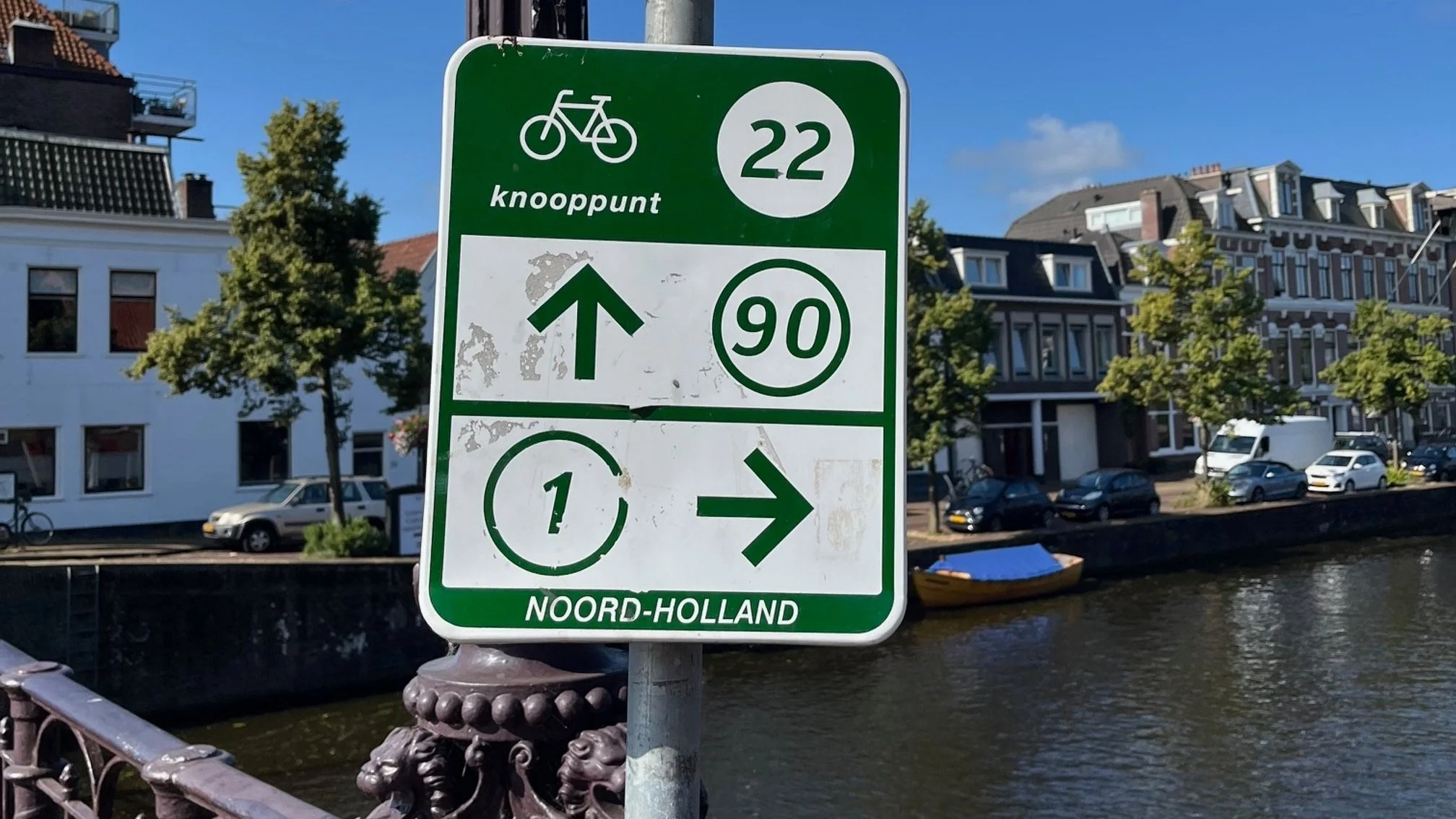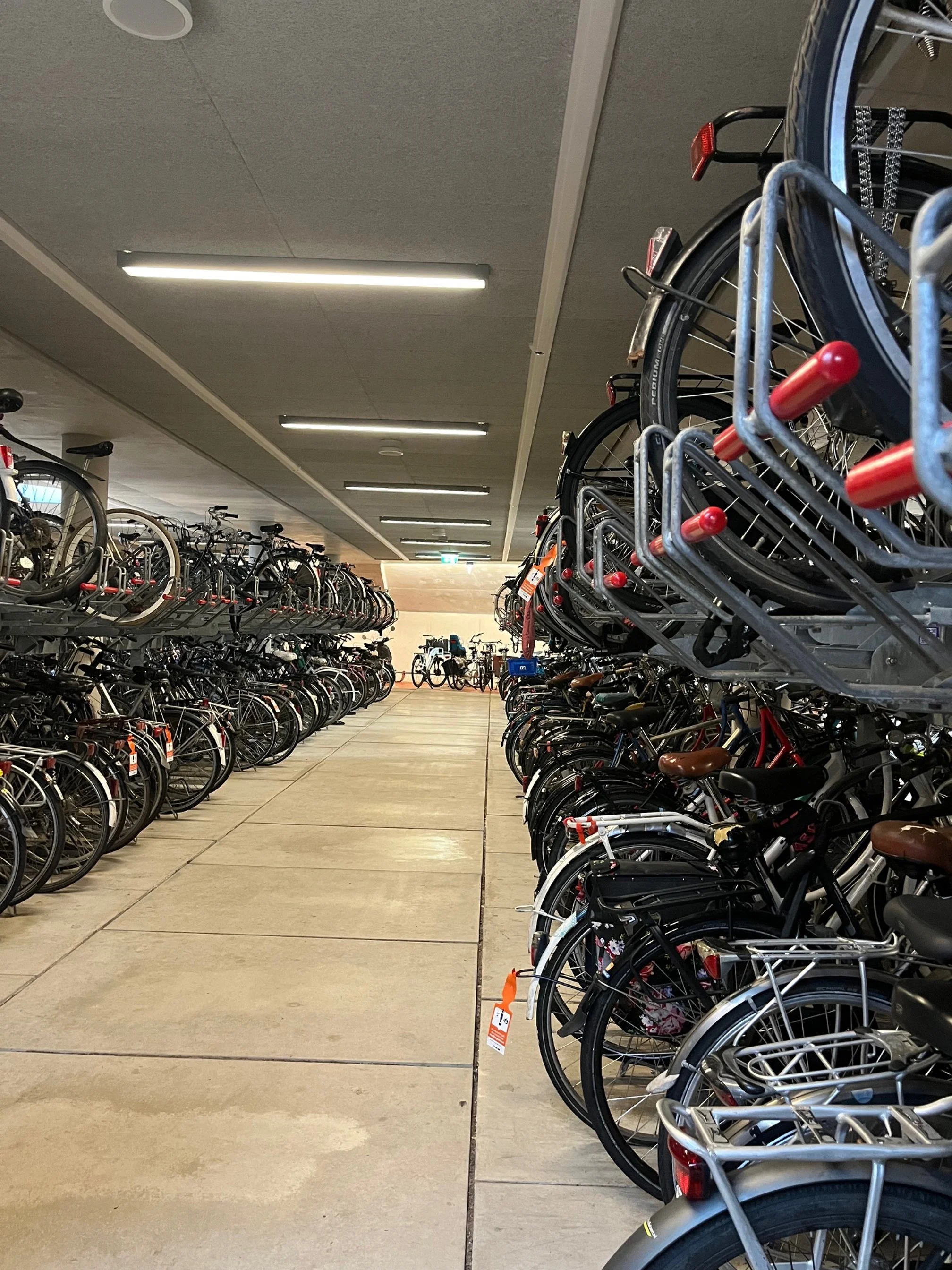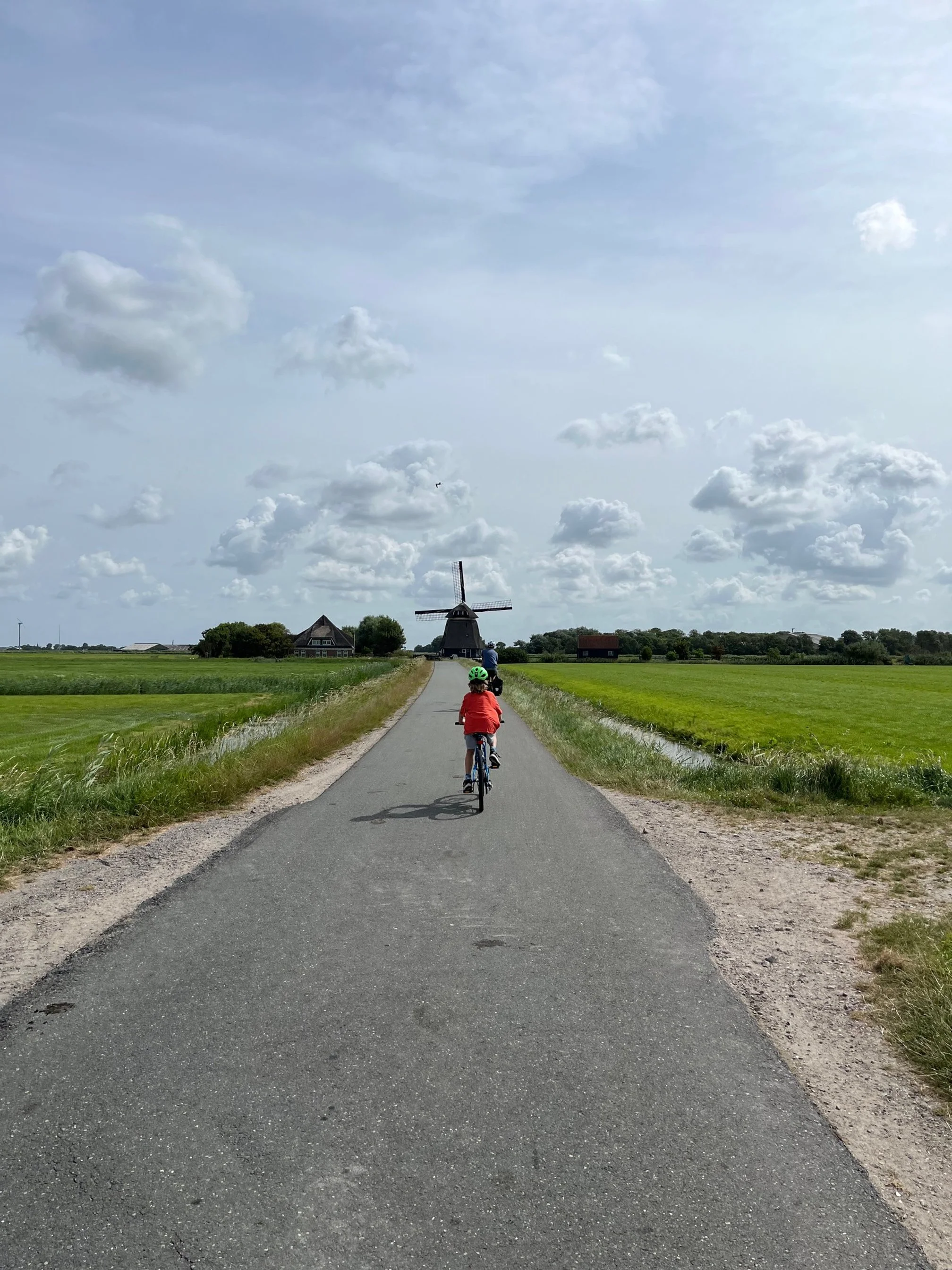Our Head of Communications, Sarah Simpkin spent her holidays enjoying the impressive cycling infrastructure of the Netherlands. For our latest blog, she takes the opportunity to talk about it endlessly… sorry, to take a look at how Dutch best practice is being shared with other cities, the value of working with specific groups to encourage uptake, evaluating what works (or not) and why, and some great feedback from DG Cities recent work in Stevenage.
Knoopunt ‘point to point’ cycle route sign in Haarlem, the Netherlands
One of the first things I did when I got back from our summer holiday was read the Dutch Cycling Embassy’s best practice guidelines. Not a sentence I might have expected to write.
We had been cycling around the Netherlands. Everyone knows the country is a leader when it comes to cycling’s modal share (in some areas, more than half of all journeys are made by bike). Still, we were so taken by the comfort of universal cycle lanes, the network of signposted ‘fietsknooppunten’ (point-to-point number sequences that our 9-year-old was able to remember and direct us between), the easy connections between towns and cities that didn’t involve the mortal danger of joining an A-road or our national speed limit on narrow country lanes; then the underground bike parks, drop kerbs, and oh my, those magical Dutch roundabouts... Equally wonderful was seeing the range of people (and pets) using them, from weekend racers to cargo carriers, and the freedom designing for wheels also gave mobility scooter users and parents with pushchairs.
The Dutch Cycling Embassy’s best practice guide is a great example of a document of its type: clear, engaging and well sourced, with so many potential lessons for spending the money the UK government has promised to invest in safe infrastructure for active travel. It demonstrates the usefulness of knowledge sharing initiatives, like Sharing Cities, which London and Greenwich, with DG Cities, were part of – an EU-funded platform for international collaboration to help commercialise, advance and deliver new smart city solutions. A chance to learn from Milan’s expertise in retrofit, for instance, or the roll out of e-bikes on the hills of Lisbon.
Cycling in London
It would be easy to come back from the Netherlands to anywhere feeling as deflated a flat tyre on a touring bike, but it’s important to remember that they are decades ahead in terms of policy and investment. While London hasn’t gone fully Dutch quite yet, things have improved significantly since I started tentatively commuting along Brixton’s bus lanes more than twenty years ago.
For a start, there are many more people out on bikes – 24% of Londoners say they have ridden a bike in the past year – supported by positive changes implemented by some councils, as well as major improvements driven by walking and cycling commissioner Will Norman and his team. We have more segregated routes, more choice, there are many more cyclists, all wonderful to see, but we’re still far from normalising the bike as a viable alternative for everyone – and clearly it has as much to do with culture and perception as infrastructure.
It's also about having access to a bike. It’s a catch-22 that many people who might be open to taking more journeys by bike won’t do so without safe infrastructure, but safe infrastructure won’t always be prioritised unless more people demand it. How might policy induce demand? In London, this kind of stimulation is helped by hire cycles and e-bike services – Lime bikes’ survey claims their usage has increased by more than 10% per month, so demand is increasing. Still, hiring any bike can be expensive for some longer journeys. When it comes to ownership, there are Ride to Work schemes and great initiatives aimed at specific groups, such as bike donation schemes for refugees, but I’m interested to see how else can we address affordability – to give people the means as well as the routes.
Understanding what works
Alongside innovation in urban design, policy and public engagement, there’s a need to commit to diagnosis and evaluation; to look at what works in terms of space, facilities and behaviours, and be prepared to adjust for change where necessary. Earlier this year, DG Cities was commissioned by Hertfordshire County Council and Stevenage Borough Council to do just that with a project looking at cycling uptake in the town.
Ed, Emily and Leanne of DG Cities in Stevenage
Stevenage, as a new town, is built to accommodate cycling and they have invested in paths and infrastructure, but rates remain stubbornly low, particularly across some demographics. This focus on increasing uptake among particular groups was one of the most interesting and useful aspects of the project – its focus was families with children under 18, staff at the Lister Hospital, and students attending North Hertfordshire College.
This kind of targeted strategy has benefits when it comes to supporting any behaviour change initiative, as Ed, our Director of Insights, who led the project explains:
“The right way to do behaviour change is to focus on cohorts, rather than any generic approach. This makes it much more effective. Here, we were able to look at behaviours within the underrepresented groups where there is an opportunity to make a difference.”
Following an intensive phase of evidence analysis and discussion, the team spent time out and about in Stevenage, talking to all kinds of road users, hospital staff, students and residents, to understand the unique circumstances of the place and people’s barriers to cycling. From this came a co-design process, to explore potential solutions and put together a practical intervention plan, which included some great ideas to trial that respond directly to people’s concerns. Bicycles libraries for people to hire rather than buy, for example, an inventive ‘cycle miles’ scheme, refresher opportunities for those at different life stages, and measures to support and grow local networks and create events centred around cycling. Great ideas that came through a more iterative process of continual improvement, and really highlighted the importance of evaluation in any programme with behaviour change as its aim.
And it’s not just us saying that. The DG Cities team was delighted to receive some very positive feedback from our client, who commented on how Ed, Leanne and Emily “demonstrated a thorough understanding of our objectives and tailored their approach to meet our specific needs. They employed rigorous behavioural science methodologies and delivered comprehensive insights that have been invaluable to our understanding of barriers and facilitators to cycling behaviours in the target area and target demographics.” They also found the final report clear, useful and told us it “provided actionable recommendations that we are confident will drive positive change to our cycling offer in Hertfordshire.”
Part of the ease and enjoyment of cycling in the Netherlands is the lack of friction between different road users. To work towards this, it’s vital to fully understand people’s concerns and work collaboratively to find solutions – not everyone can or would want to hop on a bike, and not all vulnerabilities are obvious. So it’s great to see a project like this give the DG Cities team the chance to examine the data, talk to people and look at what really works, why and for whom – and bringing fresh ideas to the challenge of increasing cycling and walking rates in different areas.
To find out more about our evaluation service, read our introduction to assessing impact or get in touch!



















